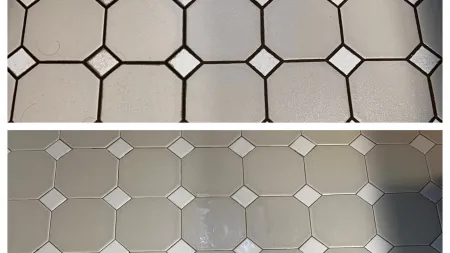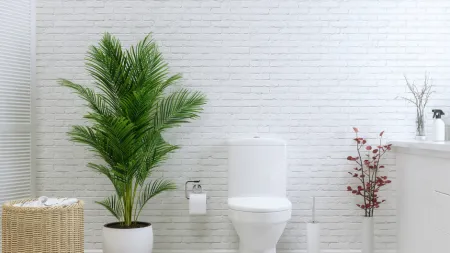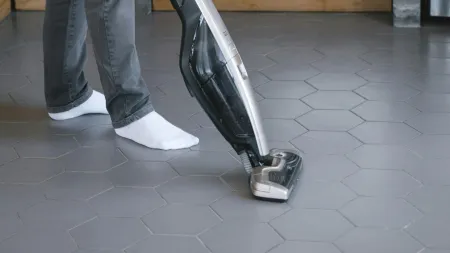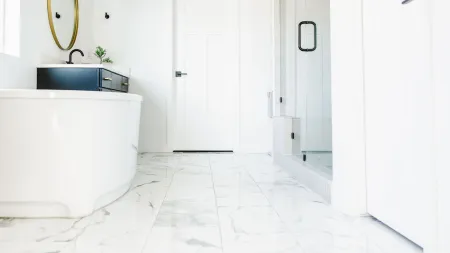The Best Outdoor Tile for Cold Climates
Poor-quality outdoor tiles in cold climates can experience fluctuations that cause breaking or cracking. The best outdoor tiles are frost-resistant, making them ideal for cold climates.
These tiles are manufactured using advanced technology, which makes it impossible for moisture to penetrate them and cause damage from freezing.
Porcelain and ceramic are non-porous. Their freeze-thaw resilience and frost-resistant finish make them ideal for pools and patios.
Regular cleaning keeps your outdoor tiles in perfect condition in cold climates, but avoid using harsh chemicals and inspect them often.
Let's explore this subject deeply so that you can decide which outdoor tile to buy for cold climates.
Outdoor Tile in Cold Climates
Choosing the right outdoor tile is necessary because it helps to save energy costs for warming tiles in cold climates. Select frost-resistant tiles and install them properly.
During cold weather, frost causes the ground to lift due to expansion. The ground also thaws, resulting in contraction and expansion due to temperature changes.
The best outdoor tiles should withstand the up and down movement without chipping or cracking.
Walkways, swimming pool decks, and patios are constantly exposed to extremely low (and high) temperatures, sand, salt, and other corrosive material annually.
When installing outdoor tiles in autumn, winter, and spring, you must consider several things.
Autumn
Temperatures between 12 and 15°C generously cover tile flooring. Always ensure that the adhesive is applied properly. After installation, the tiles take several days in autumn to dry.
Winter
Air temperatures and humidity levels can greatly impact the installation technique of outdoor tiles. It is challenging to install outdoor tiles when the ground is damp or frozen. Avoid laying outdoor tiles without an insulated underlay in sub-zero temperatures.
Alternatively, go for tiles that resist harsh weather conditions, such as porcelain, but should also meet the outlined winter standards.
Spring
Spring temperatures and weather aren't very harsh but avoid installing outdoor tiles if it's rainy or damp.
Can You Lay Tile in Cold Weather?
You can lay tile in cold weather, but consider ambient, powder, tile, and substrate temperatures (more on this later).
Though you can tile in cold weather, the harsh temperatures during the initial curing process could cause grout, sealant, or adhesive to freeze, affecting the chemical reaction crucial for permanent and proper bonding.
For proper product installation and handling, several adjustments are necessary for outdoor installation in cold climates.
The most recommended tile installation temperatures are 50°F and 95°F. When using an adhesive, ensure it can withstand temperatures of -10°C.
Avoid wetting the materials and tiles in extremely wet conditions, and install them in stages.
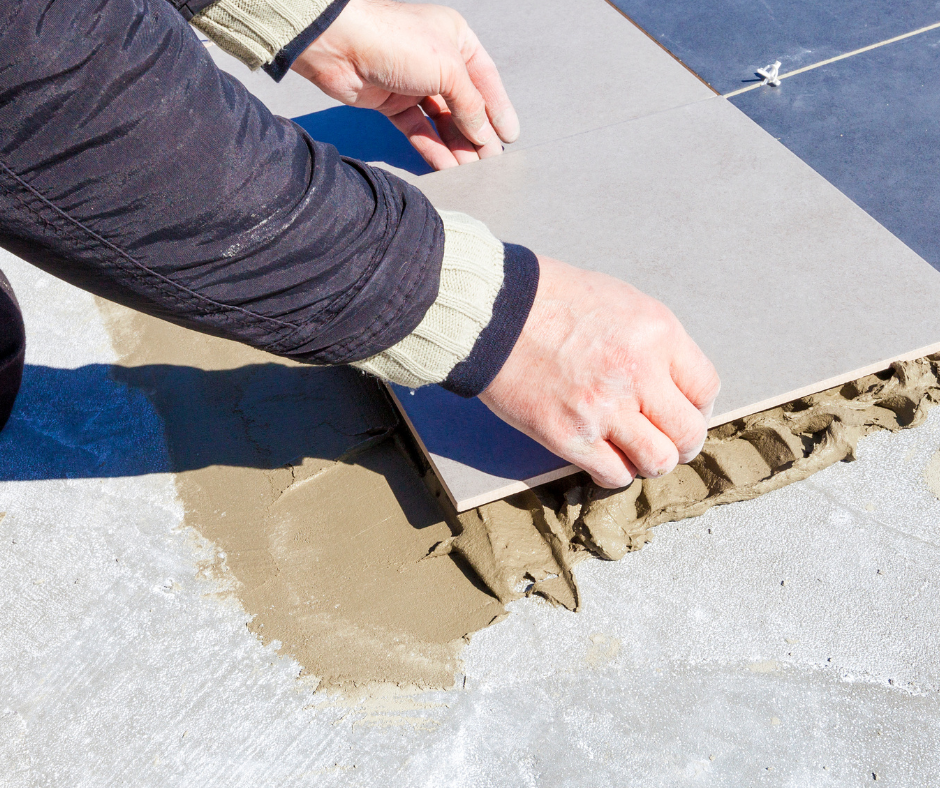
Tips for Outdoor Tile Installation in Cold Climates
When installing outdoor tiles in cold seasons, some crucial factors are surface, water, ambient, and powder temperatures.
Extremely low temperatures cause the cement curing reactions to stop.
Here are 9 tips to help you during outdoor tile installation in harsh weather.
Tile and substrate temperatures: Tile and substrate temperatures, especially when doing below, over, or on-grade installations, should range between 50 and 80ºF. There may be a vast difference between the substrate temperature and ambient temperature. If you have or can hire a temperature gun thermometer, check the temperature of the substrate to ensure it's warm for installation.
Powder temperature: Powder makes up approximately 78 to 86% of the eventual weight. Store powder bags in a conditioned room to prevent the powder from getting cold, resulting in artificially extended working time. Before mixing, the powder temperature should range between 50 and 80°F.
Prevent foot traffic for longer: Cold climates extend the final set time of mortar and grout and the pot life. This also affects the development of grout and mortar strength. So, prevent foot traffic for an extended period.
Ambient temperatures: Avoid ambient temperatures below 50ºF; they could permanently impact the bond strength. If you're installing an unconditioned area, install heaters and/or tents so that the cement continues to cure.
Use a low-speed drill: For mortar and grout installations, start by adding powder to the water and using a low-speed (300-350 RPM) drill. If necessary, wait a few minutes for the product to slake before remixing. Always avoid overmixing the mortar or grout.
Use fast-set products: Fast-set products achieve the final set faster, leaving minimal chances for temperature fluctuations that affect the installation.
Use the recommended amount of water: Exceeding or using too little water after slaking causes bonding issues.
Thoroughly clean reusable buckets: Never reuse a bucket with any residue, as that affects the products' performance and working time, especially when cement-based products are cross-contaminated.
Maintain a temperature of 50 - 80ºF for at least 48 hours: After the installation, ensure the temperature ranges between 50 - 80ºF for 48 to 72 hours. If the temperatures aren't favorable, consider using heaters or tenting.
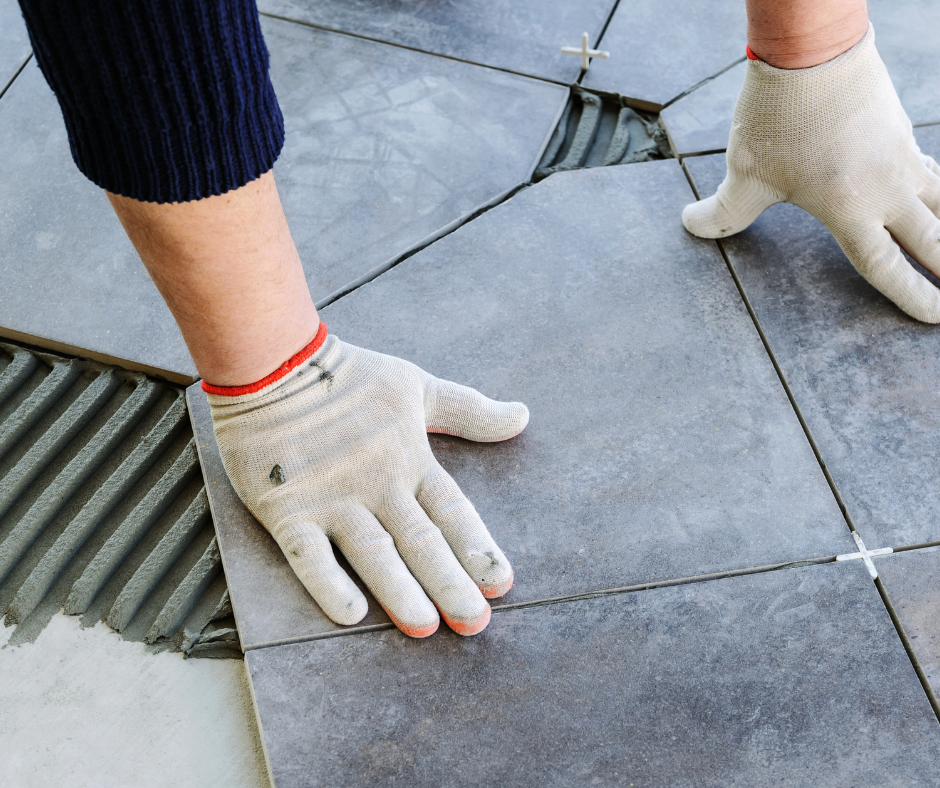
Protecting Outdoor Clay Tiles in Winter
There are various ways of protecting outdoor clay tiles from harsh weather, such as sealing grout and tiles and using high-quality grout and adhesive.
Seal Tiles and Grout
To protect outdoor clay tiles in winter, seal and grout them to stop water penetration, which causes damage during winter.
Sealants keep moisture out by creating a protective barrier, lowering the chances of expansion and freezing in winter.
Regular tile resealing helps maintain a protective layer during cold weather.
Use High-Quality Grout and Adhesive
Use the adhesive and grout that withstands frozen weather conditions to lower the risk of cracking due to moisture penetration or shifting and provide a stable base for the tiles.
Will Ceramic Tile Crack in the Cold?
Ceramic tiles are hard and thus durable because they're made from natural clay and other minerals. The clay and natural minerals are molded and fired at high temperatures, making ceramic tiles ideal for various applications such as walls and floors.
Various factors contribute to ceramic tiles cracking in cold weather.
Water and Moisture
Trapped water beneath or in the tiles causes the ceramic tiles to expand and freeze, resulting in lifting and/or cracking.
Grout Quality
Poor grout quality (and installation) could cause moisture to seep beneath ceramic tiles. When the trapped moisture freezes, it causes cracks.
You can also prevent tile and grout cracks by using a high-quality sealant that hinders moisture from penetrating.
The use of high-quality grout and sealant and proper application make ceramic tiles resistant to extreme cold weather.
Quality of the Ceramic Tiles
Invest in high-quality ceramic tiles. The tiles' material composition and quality heavily contribute to their response to cold temperatures.
Invest in frost-resistant ceramic tiles and hire experts to install them. Proper installation makes tiles less likely to crack and last longer.
Freezing Temperatures
When exposed to extreme cold temperatures, ceramic tiles can crack due to thermal contraction and expansion.
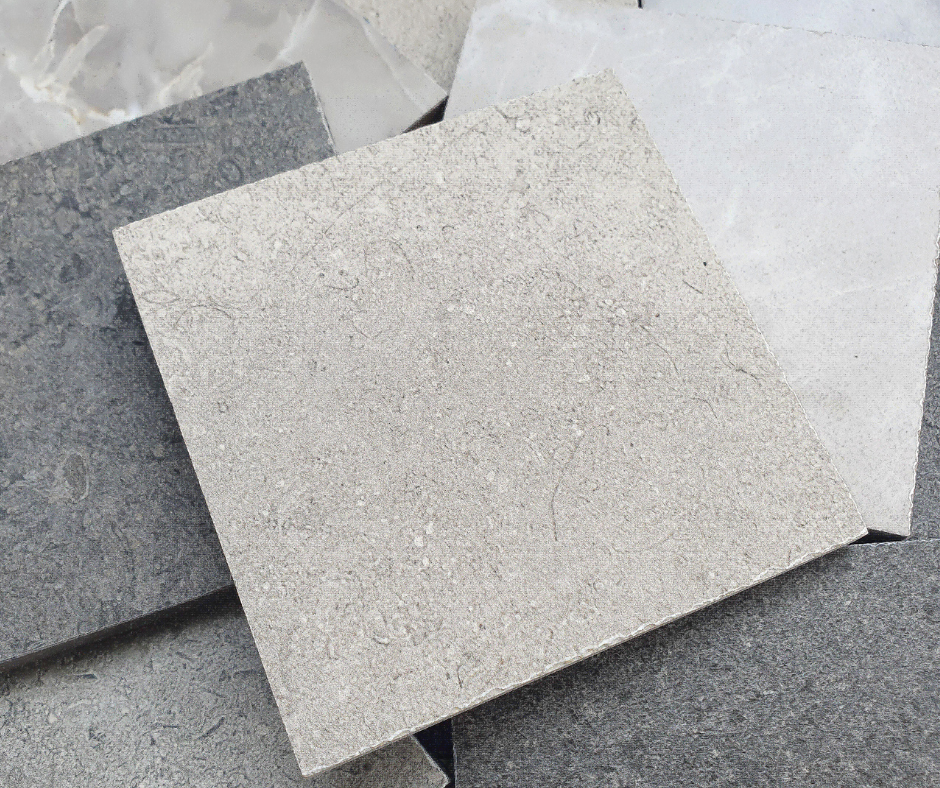
Which Is the Strongest Outdoor Tile for Cold Weather?
Slate is a natural stone that is strong for outdoor installation and handles all weather well, including extreme cold temperatures.
Slate is incredibly durable since it's made from natural stone, making it a popular choice for outdoor and indoor installation.
Which Is the Best Outdoor Tile for Cold Weather?
Porcelain: Porcelain and ceramic flooring are the best tiles for cold climates, with porcelain taking the lead. Porcelain is moisture-resistant and has an absorption rate of 0.5%, which protects the tile from water damage.
Porcelain's rough texture makes it non-slip and the best outdoor tile for cold climates.
Ceramic: Ceramic tiles come second. They're frost- and water-resistant, which means water doesn't damage them. Unglazed ceramic tiles are anti-slippery.
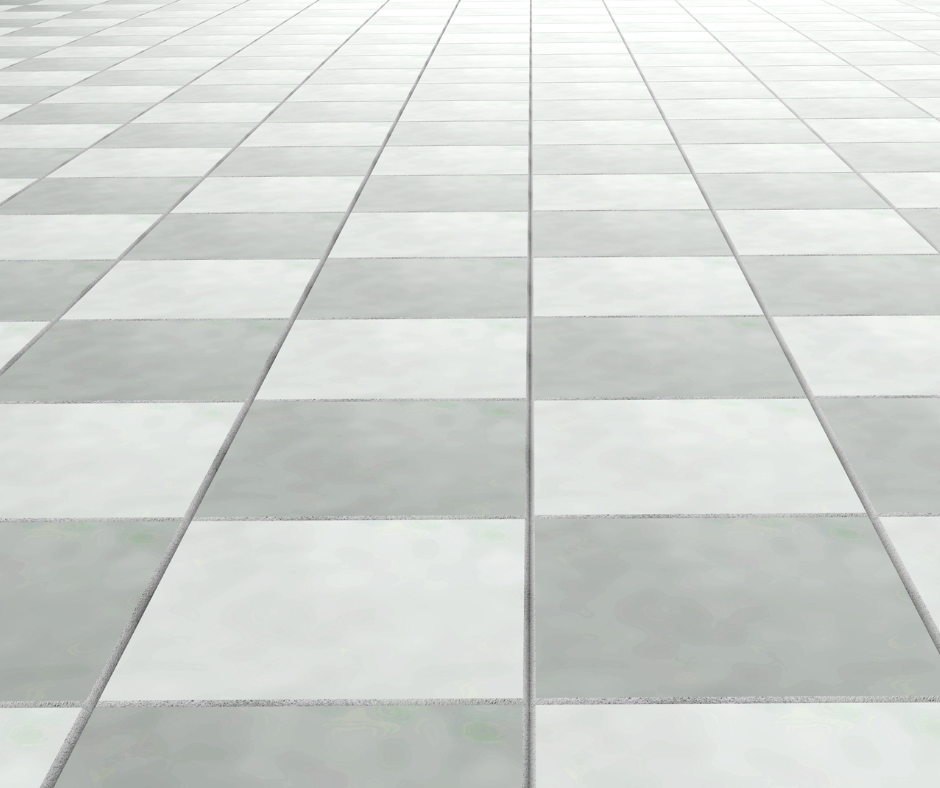
Tile Cleaning Services
Depending on the foot traffic, you should thoroughly clean your outdoor tiles once every season or at least three or four times annually.
Sweep and rinse the tiles once or twice a month to prevent mildew and dirt build-up.
At Zerorez®, we offer professional tile (carpets and hardwood flooring) deep cleaning services at reasonable prices.
Contact our customer care representatives today at 866-937-6739 if you have any questions regarding our services or want more details about our tile cleaning services.
